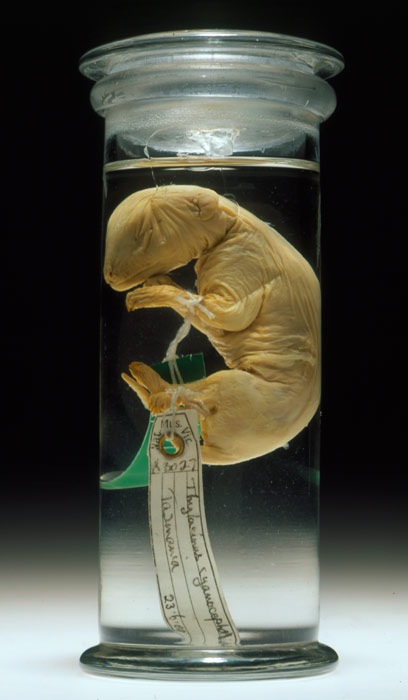 Thylacine pup
Thylacine pup
TLF ID R6896
This is a colour photograph of a preserved underdeveloped thylacine pup ('Thylacinus cynocephalus'). It is a museum specimen preserved in a glass container. Museum cataloguing labels are visible.
